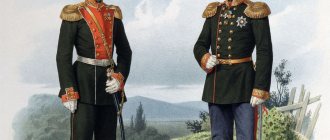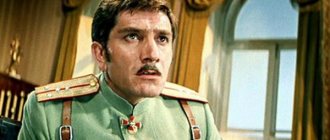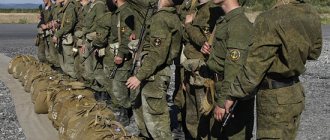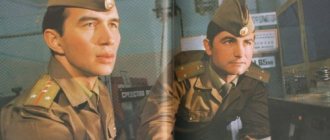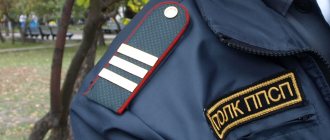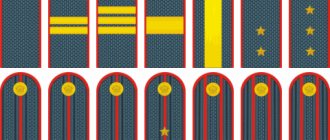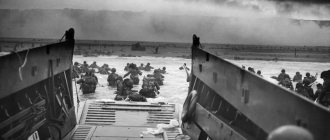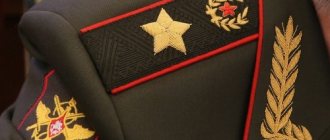Ship ranks, just like in the ground forces, are assigned according to the extent to which the serviceman has the ability and desire to take charge of the sector entrusted to him. All ranks Navy differ significantly from similar land ones. This is due to a number of events that occurred in the history of Russia.
The main changes have occurred:
- In 1917, in connection with revolutionary events.
- In the period 1922-1991 during the existence of the Soviet fleet.
- At the time of the creation of the state of Russia .
All modern naval ranks can be divided into 4 general categories: conscripts, junior officers, senior officers, senior officer ranks.
Marine shoulder straps were introduced in 1802. At this time, shoulder straps on the shoulders of sailors of the Baltic and Black Sea Fleet.
In 1917, shoulder straps were abolished when the Soviet government abandoned the old imperial system. They were replaced by sleeve patches. The sailors faced a long struggle for the right to wear shoulder straps on their shoulders, but in 1943, Navy shoulder straps again began to adorn the uniforms of the personnel of these types of troops.
Now the shoulder straps of all naval personnel are black . The difference in ship ranks is in the location and number of distinctive signs on them.
Conscripts
In Soviet times, service in the navy was 3 years, so many conscripts tried to avoid such long service. They hid from conscription just to avoid joining the navy. Currently, the Navy is called up to serve for 1 year, the same as the Army.
However, due to the fact that in 2022 a decree was issued regarding conscript service in the Navy , conscripts will no longer serve on ships and submarines. This is due to the fact that the Navy is moving to a contract basis.
In order to train personnel, more time is needed than allotted for conscription service. Conscripts will serve exclusively in the Coast Guard or Marine brigade.
Naval ranks and shoulder straps in the Navy are assigned according to a certain period of service. All conscripts entering these troops receive the rank of sailor , which corresponds to the rank of private in other types of troops. During the service, if the sailor proves himself, he may be awarded the next rank in the sailor's career, senior sailor , which is identical to corporal in the ground forces.
Sailors can be:
- radio technicians;
- mechanics;
- helmsmen.
The senior sailor is already allowed to command the group or temporarily replace the squad leader. The shoulder straps of sailors, like those of privates, are clean. There is only a designation in the form of the letter “F” on the shoulder strap. The senior sailor has one stripe in the form of a corner on his shoulder strap.
Next in the ranks of the Navy are senior ranks, which are identical to sergeant ranks in other troops. Their duties also correspond to the sergeant and petty officer ranks in the ground forces.
The distribution of responsibility begins with the senior officer of article 2. Next comes the 1st Article Petty Officer , these sailors are entrusted with command of the squad, and the Chief Petty Officer can take responsibility for commanding the platoon. The chief petty officer on a ship is responsible for the company.
Shoulder straps for senior officers of the navy differ in the number of stripes on them. The sergeant major of the second article has 2 triangular stripes on his shoulder straps. A petty officer of the 1st article has three stripes on his shoulder straps, and a chief petty officer wears one, but wide stripe. On the shoulder straps of the ship's chief petty officer there is a wide stripe and another narrow one next to it.
The next level on the career ladder is “ midshipman ”. This title is given only to those sailors who have graduated from a special school. In ground and air forces it corresponds to the rank of " ensign ". They are mainly responsible for organizational issues. The rank of " senior midshipman " has more powers and allows you to command military personnel of lower ranks.
The shoulder straps Navy for sailors of this rank differ in the number of stars. The midshipman should have two stars on his shoulders, and the senior midshipman should have three small stars on his shoulder straps. The maximum rank for conscripts in the ranks of the Navy , subject to military service, is sergeant major 2nd article . This limitation is due to the fact that to receive this promotion you need to serve 1 year.
Colors and types of shoulder straps
Soldiers, sergeants, foremen
- Jacket and winter coat - sewn-on quadrangular shoulder straps of red color (in the Aerospace Forces, Airborne Forces - blue; in tank, artillery, anti-aircraft missile, automobile, engineering, topographical, technical, railway troops, strategic missile forces, communications troops, radiation, chemical and biological protection, fuel service - black).
- Ceremonial shirt (green) - similar in color to the shoulder straps on the ceremonial jacket, but removable hexagonal with a golden button, on which there is a relief image of the coat of arms of the Russian Federation.
- Field uniform - removable shoulder straps-muffs of camouflage color[2], put on pentagonal field shoulder straps with a khaki-colored button without a coat of arms, which has 4 through holes for sewing, sewn with one edge into the field uniform (with the exception of ordinary personnel, for which sewn into the field uniform is enough shoulder strap shape).
- Sergeant's shoulder straps and winter coat
- Everyday uniform ml. VKS sergeant's jacket and winter coat
- Sergeant's field shoulder strap
Ensigns (except Navy)
- The jacket and summer coat are sewn shoulder straps of a protective color, with red edging on the sides (in the Aerospace Forces, Airborne Forces - blue, in tank, artillery, anti-aircraft missile, automobile, engineering, topographical, technical, railway troops, strategic missile forces, communications troops, radiation, chemical and biological protection, fuel service - black) color.
- Ceremonial shirt (green) - similar in color to the shoulder straps on the ceremonial jacket, but without edging, removable hexagonal with a golden button.
- Field uniform - removable shoulder straps-muffs of camouflage color[3].
Officers (except Navy)
- The ceremonial jacket consists of sewn shoulder straps of golden color, with red edging on the sides (in the VKS, Airborne Forces - blue).
- Everyday jacket, winter coat - sewn-on quadrangular shoulder straps in a protective color (in the VKS, Airborne Forces - dark blue), for generals and marshals with red edging on the sides (in the VKS, Airborne Forces - blue).
- Casual shirt (green), wool jacket, demi-season jacket, summer raincoat - removable hexagonal shoulder straps of khaki color (in VKS, Airborne Forces - dark blue) without edging with a golden button.
- Dress shirt (white) - removable hexagonal shoulder straps of white color without edging with a golden button.
- Field uniform - removable camouflage-colored shoulder straps.
- Everyday uniform of a colonel
- Everyday shoulder strap of a VKS colonel
- Ceremonial shoulder strap of a colonel of the Army
- Ceremonial shoulder strap of a VKS colonel
- Colonel's field shoulder strap
Sailors, foremen and midshipmen of the Navy
- The ceremonial jacket and winter coat are sewn-on quadrangular shoulder straps with a field made of synthetic threads of gray-black color with weaving in the form of squares in a checkerboard pattern with white edging.
- Dress shirt (beige for midshipmen; not provided for sailors and foremen) - similar in color to the shoulder straps on the dress jacket, but removable.
- Everyday clothing (sailors, petty officers) - shoulder straps with a field made of black cloth[4].
Navy officers
- The ceremonial jacket consists of sewn shoulder straps of golden color, with black edging on the sides.
- Everyday jacket, winter coat - sewn-on quadrangular shoulder straps of black color, for admirals with yellow edging on the sides.
- Casual shirt (beige) - detachable hexagonal beige shoulder straps without edging with a golden button.
- Dress shirt (white) - removable hexagonal golden-colored shoulder straps without edging [5] with a golden-colored button.
- Everyday shoulder strap of a petty officer of the 1st article of the Navy
- Daily shoulder strap of a Navy admiral
- Navy Admiral's ceremonial shoulder strap
Junior officers
The very first rank in this officer corps is junior lieutenant . It is assigned to the commander of a section on a ship or a platoon; it is also available in other branches of the military. Accordingly, the rank of lieutenant can be awarded upon expiration of the period of service at the previous rank. The assigned responsibility is higher than in the previous rank.
The first lieutenant has a responsibility higher than that of the lieutenant, which allows him to be the first mate of the ship. The next step in a sailor's career is obtaining the rank of captain-lieutenant, which is the final step in this officer corps. In other troops it is similar to the rank of army captain. A sailor with this rank can have a hundred subordinates at his disposal.
On the shoulder straps of lieutenants, in addition to the stars, there is a narrow stripe that runs along the entire shoulder strap. The number of stars depends on the rank. The smallest number is one star for a junior lieutenant, and then with each rank their number increases. The captain-lieutenant has four stars on his shoulder straps.
Senior officers
Senior officers also include the rank of captain.
- " Captain 3rd Rank " may have similar powers to a major in the ground forces. He is allowed to manage ships corresponding to his rank. This can be the control of small military vessels: torpedo-carrying ships, landing ships, anti-submarine ships, minesweepers.
- Captain 2nd rank is similar to lieutenant colonel in other army forces. He can control large warships such as missile and destroyers, as well as large landing ships.
- The highest captain's rank is captain 1st rank . He has the ability to control advanced ships such as aircraft carriers, cruisers and submarines . The rank is lower than the highest ranks of the navy and corresponds to a colonel in the ground forces.
The captain's shoulder straps have two longitudinal stripes. What does it mean to belong to the rank of captain? But the difference in ranks can be determined by the number of stars. The largest number, three stars, is located on the shoulder straps of a 1st rank captain.
ADMIRAL GENERAL OF THE RUSSIAN FLEET AND OTHER NAVAL OFFICERS
Home / Publications / Literature / Bookshelf / V.A. Dygalo. Russian fleet. Three centuries in the service of the FatherlandWith the development of permanent armed forces in our state, the need arose to determine seniority in relations between military personnel in accordance with their official position.
In the 15th-16th centuries, military thanes appeared in Russia for the first time. So, for example, in 1550, for the Streltsy army, the tsar established the following ranks: Streltsy, foreman, pentecostal, centurion, half-head, head of the order, governor, Streltsy head. In 1681, a new rank appeared - colonel. After the formation of the regular army and the Russian Navy, new military ranks (ranks) were introduced for them.
In 1722, Peter I approved his famous legislative act - “Table of Ranks” - which legitimized some of our previously existing ranks and established a clear system of military, state (civilian) and court ranks in the Russian Empire, their correspondence to each other, the procedure for passing the state services and sequence of ranks. In accordance with the “Table of Ranks,” all ranks were divided into 14 classes (the first was the highest). Military ranks consisted of four categories - guard, land, artillery and naval.
Peter I introduced naval ranks for admirals, headquarters and chief officers of the fleet of the Russian Empire. The list of naval ranks began with Admiral General. This was the highest rank in the navy. According to the “Table of Ranks”, Peter I put him on a par with the Field Marshal General, as a person of the first class. However, at first, the boundaries of the power and influence of this rank were not precisely defined in the laws, and depending on the circumstances, the admiral general was either the actual head of the fleet, or bore this title as an honorary one.
The last Admiral General of the Russian Fleet, Grand Duke Alexei Alexandrovich, “the chief commander of the entire fleet and the Naval Department,” died on November 1, 1908. The year of the Admiral General’s death coincided with the 200th anniversary of the existence of this military rank in the Russian Navy.
Peter the Great, as you know, was not a born sailor, but he perfectly understood the importance of the sea in the life of the state. Gaining access to this new source of the country's development had to be done by force of arms. To conquer and maintain access to the sea, a fleet was needed first of all. To create a fleet, dedicated, energetic people were required who would exactly fulfill all the requirements of the king, knew all the needs of the new maritime business and could improve the life of the fleet. One of these, and, moreover, the best, assistants to the Tsar-Sailor was Count Fyodor Matveevich Apraksin, with whose name, as well as with the name of Peter the Great, the entire history of the Russian fleet, the history of its general admirals, is inextricably linked.
Fyodor Matveevich Apraksin was born in 1661. His sister, Marfa Matveevna, married Tsar Fyodor Alekseevich, and this is probably why Apraksin was appointed at the same time as the Tsar’s steward (1), and after the death of the childless Fyodor in 1682, he became the steward under the young Tsar Peter Alekseevich. With this rank, Apraksin participated in all the amusing wars and voyages of the future Great Sailor along rivers, lakes and the White Sea. Already at that time, Pyotr Alekseevich had more than one occasion to convince himself of the sincere devotion, great abilities and indestructible strength of character of his steward. In 1693, Apraksin received his first prominent and responsible appointment - the post of Dvina voivode and governor of Arkhangelsk, where the first government ship was being built - the 12-gun yacht "St. Peter". Then Apraksin took part in the Azov (1696) and Kerch (1699) campaigns, and in 1700 he was appointed chief commander in Voronezh and led the construction of ships for the Azov fleet, receiving the rank of admiralty. From the very beginning of the emergence of the fleet, in the second Azov campaign, the management of the fleet was entrusted by the Tsar to Franz Yakovlevich Lefort, who became the first Russian admiral, and before that, in 1691, he was awarded the rank of lieutenant general. Lefort often signed official papers with two ranks: general and admiral. Obviously, therefore, there is a misconception that he was the first admiral general. The second admiral after Lefort’s death was Fyodor Alekseevich Golovin, who was also mistakenly “granted” the rank of admiral general in many encyclopedic publications. In 1706, Field Marshal General and Admiral F.A. died. Golovin, and the tsar ordered Apraksin to take over all the affairs of the Naval Department, which were in charge of the deceased. In 1707, Fyodor Matveyevich was promoted to admiral, and the next year, having a flag on the 32-gun ship Dumkrat, he already commanded the fleet in the Gulf of Finland.
In the fall of 1708, when Swedish troops, together with a fleet of 22 pennants, tried to capture St. Petersburg, the commander of our troops operating against these enemy forces was F.M. Apraksin. A strong detachment of Swedes under the command of General Lübecker was defeated. Vice Admiral K. Kruys, in a letter to A.D. Menshikov dated October 20, 1708, spoke about the outcome of this bloody battle near Narva, which ensured the integrity of St. Petersburg: “Having gathered an army, Apraksin defeated the enemy this month on the 16th day (October. - V.D.) in the trenchment (in battle formation - V.D.) attacked and killed all 30 officers. The enemy’s baggage (military convoy - V.D) was all destroyed, 6,000 or 7,000 Reitar’s, as well as those that were under the bogazhia, horses were shot and stabbed upon our arrival” (2).
For this glorious deed, Peter the Great on December 22, 1708 ordered Admiral Apraksin to give the admiral general's salary on the same basis as a field marshal general - 7,000 rubles. From that day on, Apraksin began to be titled Admiral General in official documents. Vice Admiral K.I. Kruys constantly addressed Apraksin this way, and the sovereign himself did not always address his correspondence with this title (3).
Peace with Sweden was concluded in the city of Nystadt on August 30, 1721. Among the many awarded, the tsar did not forget the merits and works of F.M. Apraksin: he was given the flag of the admiral general, called the Keizer flag.
Commanding the fleet, Apraksin raised this flag on the mainmast of the flagship (4).
For the first time, the Keizer flag was raised by Apraksin on the Volga near Astrakhan in 1722 in a surprisingly solemn atmosphere. Commanding the Caspian Sea fleet, on July 3, Count Apraksin arrived on a gukor in Astrakhan under the Keizer flag, and Admiral Pyotr Alekseevich (that is, the Tsar himself), who commanded the advanced naval detachment, was the first to come to him with a report on a rope. Following the king, other leaders appeared. The ships and the city fired cannon salutes. The fleet was intended for military operations against Persia.
In subsequent years: 1723,1724,1725 and 1726 Count F.M. Apraksin commanded a fleet that spent the winter in the Kronstadt roadstead, having his flag on the ship “Ekaterina”.
But the admiral general’s service was not without disappointment, since the tsar treated all ranks of the fleet equally strictly. In 1714, an investigation was ordered against Apraksin following a denunciation accusing him of abuse of contracts for the treasury. Abuses really came to light, but Apraksin was not guilty of them. The culprits turned out to be his subordinates, who took advantage of the Admiral General’s constant travels for personal gain. And yet Apraksin was fined by the sovereign a huge amount. In 1718, when Apraksin was cruising in the Gulf of Finland, having his flag on the ship "Moscow", he was again put on trial "for abuses." At the same time, the Admiral General was arrested and sentenced to deprivation of property and dignity, but in respect of previous merits, the sovereign’s punishment was limited to a monetary penalty. Finally, in 1723, Apraksin was fined 50 rubles for “non-existence at the water assembly” (5).
Under Peter the Great, neither high rank, nor military merit, nor kinship spared those guilty or even those suspected of a crime in their service from investigation, trial and punishment. Even such a seemingly insignificant offense as the absence of a 62-year-old admiral general from a pleasure water assembly did not go unnoticed. After the death of Peter the Great, the old admiral general had the misfortune of seeing the decline of the fleet.
The first Admiral General of the Russian Fleet, Count Fyodor Matveevich Apraksin, died on November 10, 1728 and was buried in the Moscow Zlatoust Monastery.
Under Peter the Great, the Almiralty Collegium, as the highest governing body of the naval department, actually worked under the chairmanship of the Admiral General.
After the death of the emperor, the college turned into an irresponsible institution. The fleet quickly fell into disrepair, no money was allocated for it, the ships deteriorated in the harbor and were not repaired. Increasingly, voices from high-ranking officials were heard about the uselessness of the fleet and its possible complete liquidation. But, fortunately, there were also people in power who sacredly kept the covenants of Peter I and deeply understood the goals and aspirations of the Great Sailor. One of these associates, “chicks of Petrov’s nest,” was Andrei Ivanovich Osterman.
The son of a pastor from the town of Bochum in Westphalia, a young student Osterman was transported to Russia by K.I. Cruys in 1704. He quickly learned Russian speech and was renamed from Heinrich Johann to Andrei Ivanovich. German by nationality, Osterman gave Russia all his strength and abilities; his amazing persistence in implementing the plans and plans of Peter the Great largely saved the Russian fleet. When Osterman once apologized for mistakes in Russian speech, explaining them by the fact that he was not Russian by origin, one of his main opponents, Bestuzhev, answered him in the presence of others: “You are not only Russian, but a Russian who is worth twenty others”( 6). Bestuzhev was right, since, according to the historian of the war with Turkey A. Kochubinsky, this German did not stop thinking about the Turks and sighing about the Bosporus even in distant Siberia. Andrei Ivanovich began his career in the diplomatic field and accompanied Peter I on his travels at sea and on military campaigns. He was with the king both on the Prut and in Reval, and together with Bruce he made peace with the Swedes in Nystadt in 1721. Thanks to Osterman’s persistence and energy, the terms of the peace treaty were so beneficial for Russia that, in the words of the sovereign, “He himself could not have written a better one for the signature of the Swedes. This glorious work of yours in the world (Osterman - V.D.) will remain forever unforgettable. Our Russia has never received such a useful peace” (7). For this service for Russia, the emperor granted Osterman the rank of Privy Councilor and made him a baron.
During the reign of Catherine I A.I. Osterman was a member of the Supreme Privy Council and after the death of Admiral General F.M. Apraksin was appointed chairman of the Military Naval Commission “to review and bring into good and reliable order the fleet, the admiralty and everything that belongs to it.”
During the reign of Anna Ioannovna, Osterman was granted the title of count, and he actually began to lead the foreign and domestic policy of Russia.
Andrei Ivanovich Osterman was awarded the rank of Admiral General on November 9, 1740 and took full control of the Naval Department, while still remaining at the head of the College of Foreign Affairs.
Not being a sailor by profession, Osterman used the advice and guidance of the best and most experienced Russian sailors. One of them was Admiral Count Nikolai Fedorovich Golovin, who remained president of the Admiralty Boards from 1733 until the fall of Osterman.
It is noteworthy that at that time naval officials of all ranks did not like the sea and ship service, looking for a place on land. Golovin was able to stop this misfortune with the help of the Admiral General, who signed the order he prepared “On the non-appointment of naval officers to positions not belonging to their rank and on the return to the fleet of officers seconded to various coastal services.”
The expeditions of Bering and Chirikov were the fulfillment of the behest of Peter the Great, which was just as sacredly and stubbornly carried through to the end by his worthy disciple, Andrei Ivanovich Osterman. But he himself ended his career sadly.
Andrei Ivanovich Osterman, as you know, was sentenced to death, which was replaced by exile to Berezov. Among the accusations was the following: “...from the Admiralty commands, he ordered reports on the entire situation to be sent to himself, and not to the Admiralty Collegium, and did not report to the Collegium about the reports received before.” As we can see, the accusation is far-fetched, but nevertheless...
Second Admiral General of the Russian Fleet Andrei Ivanovich Osterman died in Berezovo on May 20, 1747.
With the removal of Admiral General A.I. from the fleet. Osterman, in the spirit of the times, began to be persecuted and the orders and improvements he had established. However, the return to the old was limited to trifles. So, for example, in the navy, instead of one flag, flags of three colors were reintroduced, and the intermediate authority between the fleet and the empress, instead of the cabinet of ministers, became the conference of ministers. Having ascended the throne, Empress Elizabeth Petrovna found the fleet in a more than unsatisfactory condition and was looking for a person capable of raising it to the level at which it was under Peter the Great. Finally, her choice fell on Prince Mikhail Mikhailovich Golitsyn.
Prince Golitsyn was recruited into the navy at the choice of Peter I himself in 1703 and sent to Holland for maritime training in 1708. He returned to Russia only at the beginning of 1717, when the most difficult period in the Northern War was already over. He commanded one of the detachments of galleys of the rowing fleet, which on July 27, 1720 defeated a Swedish squadron of sailing ships off the island of Grengam. Since 1726 - Advisor to the Admiralty Collegiums. During the reign of Anna Ioanovna Golitsyn built ships on the Don, in Tavrov; then (from 1740) he was governor-general of Astrakhan, and in 1745 he was sent as ambassador to Persia.
And on April 24, 1749, Prince M.M. Golitsyn was ordered by the highest authorities to “have the main command over the fleet,” and a year later he became president of the Admiralty Collegiums. In fulfillment of the will of Empress Elizabeth Petrovna, the new president had to work hard to dismantle the maritime institutions established during the previous reign and to restore the Petrovsky ones. The reform was prepared for sixteen years, and finally in 1757, upon approval of the joint report of the Senate and the Admiralty Boards, the fleet received new management and new states. But even before the reform, on September 5, 1756, Mikhail Mikhailovich Golitsyn, at the age of 75, was promoted to admiral general. However, this high rank did not increase Golitsyn’s energy. In 1757, he was no longer present at all on the Admiralty Boards, although the war with Prussia required the exertion of all forces on land and at sea. The fleet was in such decline that it was difficult to even think about its future. The Admiralty Board met and wrote, the ships stood in the Kronstadt harbor, but as soon as they went to sea, leaks were discovered in their hulls, and they were saved in Reval or Kronstadt. Admiral Mishukov in 1757, already 73 years old, was appointed Commander-in-Chief of the naval forces of the Russian Empire and “for advice” received admirals Lopukhin and Myatlev as assistants. But Myatlev had not been at sea since 1728 and had long held an administrative post in Siberia. Of course, the fleet did not improve with the arrival of these admirals. There was no one above the fleet, above its admirals and board, who in the old days restored order with a “cane” and an iron hand.
So, on April 10, 1762, Admiral General Prince M.M. Golitsyn “due to extreme old age and illness” was dismissed from service with half his salary. Upon the accession of Empress Catherine II to the throne, he was ordered to be present in the Senate and Admiralty boards. But on December 21 of the same year he was dismissed from service with full salary (7,000 rubles). While living in the capitals, Golitsyn was allowed to have a guard of honor and retain an adjutant general with him.
A new dawn was breaking over the fleet, a century of glorious deeds, resounding victories, amazing feats under the leadership of “Catherine’s eagles” was beginning.
Catherine II, who ascended the throne, did not want to see the physical and moral decline of the fleet.
It was necessary to raise the fleet to the level of the state that the Great Sailor intended for it, as the second arm of a powerful empire, as an actual part of the armed forces of the state. And less than six months after the accession to the throne of the new empress, a decree followed on December 20, 1762, which read as follows: “The zealous and tireless care of Her Imperial Majesty for the benefit of the state and for the other, flourishing state of the fleet belonging to it, Her Imperial The Majesty, wishing, together with the worthy imitation of the blessed and immortal memory of the deeds of His Imperial Majesty the Sovereign Emperor Peter the Great, to trust even in his tender infant years to Her most beloved son and heir. Imperial Majesty Tsarevich and Grand Duke Paul. Petrovich, most mercifully appoints His Imperial Highness to admiral general and orders him to be sent from the Senate where it is necessary in the decree” (8).
This decree was an important event in the history of Russian admirals general: from 1762, the rank of admiral general began to be assigned only to the heirs to the throne or members of the royal family.
The third admiral general in the history of the Russian fleet, Prince Mikhail Mikhailovich Golitsyn, died on May 25, 1764 and was buried in the Moscow Epiphany Monastery.
A ten-year-old admiral general(9) could not bear either the service or responsibility traditionally associated with this highest military rank since the days of Peter the Great.
But even in adulthood, the activities of the august general-admiral during the entire reign of Catherine were very insignificant. The Grand Duke accepted congratulations from the admirals on his appointment and on his name day, accompanied the Empress to Kronstadt and Revel, and appeared from time to time at the Admiralty Collegiums. But all the affairs of the fleet were in charge of the empress herself, listening to the reports of Count Ivan Grigorievich Chernyshev, who was appointed vice-president of the Admiralty Boards on June 4, 1769, that is, when our fleet was under the command of the admiral of the GA. Spiridova to Chesma. It is known what glory awaited our sailors in the Mediterranean Sea and how many amazing feats they accomplished, remaining there almost continuously until 1808.
The Great Empress died on November 7, 1796, and the next day, during the divorce, among other orders of Emperor Paul I, signed by A.A. Arakcheev, there was also the following: “His Imperial Majesty retains the rank of admiral general in the fleet.”
From that day on, not the slightest order on naval affairs came except from the august Admiral General, who considered himself also the President of the Admiralty Collegiums.
Until the last days of his life, Emperor Paul I did not stop caring about the fleet. For general supervision of shipbuilding in all ports, both Baltic and Black Sea, in 1797 the title of Ober-Sarvaer (Chief Inspector - V.D.), which existed under Peter I, was restored, which was received by the remarkable shipwright Lieutenant General A.S. . Katasonov, and, in addition, to improve shipbuilding, two excellent shipbuilders were invited to the Russian service from Constantinople - the French brothers Le Bruy de Sainte-Catherine. Over the last four years of the 90s of the 18th century, in addition to small ships in the Baltic and Black Sea fleets, 25 battleships (17 battleships and 8 frigates) were launched and the construction of 9 (5 battleships and 4 frigates) began, but was not completed. But the emperor’s days were numbered, and on the night of March 12, 1801, the Russian fleet lost its admiral general, the fourth in a row and the first of the imperial family.
30 years passed after the death of Emperor Paul I until the appointment of a new admiral general, Grand Duke Konstantin Nikolaevich. Why did it happen so? First of all, because after the death of Paul I, his son Alexander I became emperor. The period of his reign (1801-1825) was characterized by a lack of understanding of the importance of naval forces for Russia and the complete abandonment of the fleet. The fleet was assigned a secondary role, limited to the defense of the state and not allowing long-distance independent expeditions as expensive and not beneficial. At one time, the issue of selling the Russian fleet to England was seriously considered. It is clear that during this historical period there was no need for the high rank of admiral general. The second resurrection of the naval power of the empire began with the accession to the throne of Emperor Nicholas I.
In 1827, instead of the Admiralty Collegiums, the Admiralty Council was established, which initially served as an advisory body to the Minister of the Navy.
The second son of Emperor Nicholas I, Constantine, was born on September 9, 1827, a month before the glorious victory at Navarino. And on August 22, 1831, he was appointed admiral general and chief of the Guards naval crew. It should be noted, however, that while reviving the sailing fleet, Nicholas I showed indecisiveness in the transition to a sailing-steam fleet.
In 1855, the Grand Duke, with the rank of admiral general, took over the management of the fleet and the Navy Ministry as a minister. From that time on, his activity began, direct and extremely energetic and fruitful. Only under Konstantin Nikolaevich did the Russian fleet finally take shape on the model of the fleets of Western European states. It should be taken into account that the Grand Duke received control of the fleet after the Crimean War, which revealed all its shortcomings and backwardness. Then, as now, the question was discussed in every possible way: “Does Russia need a fleet?” Doubts on this issue were finally dispelled only in 1863, when the services of sailors in the Baltic Sea and the Far East were required to protect the borders of Russia. The activity of the Russian fleet was caused by the statement of the English and French governments of “support” for the rebel Poles in their struggle to win national independence. There was a real threat of military action by France and England against Russia.
In order to influence England, the Russian government, at the suggestion of the head of the Naval Ministry, Admiral N.K. Krabbe decided to send a cruising squadron under the command of Rear Admiral S.S. to the Atlantic Ocean from the Baltic Sea. Lesovsky and at the same time the second squadron under the command of Rear Admiral A.A. Popov to the Pacific Ocean with the aim of concentrating them in the US ports of New York and San Francisco for an operation against English maritime trade.
The news of the unexpected appearance of both squadrons in American ports made an impression, and the British government was forced to abandon support for France. France, remaining isolated, refused to act against Russia. After the suppression of the uprising in Poland, the squadron of Rear Admiral Lesovsky was recalled to the Baltic Sea on July 20, 1864, and the squadron of Rear Admiral Popov returned to the waters of the Far East.
Preventing a war with England by threatening its maritime trade with Russian warships gave a clear answer to the question posed - Russia needs a fleet. This somewhat facilitated the fight against the fleet’s opponents and marked the beginning of fundamental changes in shipbuilding and artillery weapons. During the period of control of the Maritime Department by Grand Duke Konstantin Nikolaevich, our fleet moved from sail to machine, from wood to iron, steel and armor.
The annual voyages of the Russian fleet in distant seas made it possible to train a cadre of experienced professional sailors and develop large administrative and scientific activities in the fleet. In the navy, the service life of sailors was shortened, corporal punishment was abolished, and the living conditions of officers were improved.
In March 1880, Grand Duke Konstantin Nikolaevich withdrew from the activities of the fleet, and on January 13, 1892, the Admiral General died.
But during his lifetime, Grand Duke Alexei Alexandrovich, brother of Emperor Alexander III, was promoted to admiral general on May 15, 1883. However, His Highness took over the management of the fleet much earlier, namely immediately after Konstantin Nikolaevich retired from business. A very short but apt description was given to him by the head of the Baltic Shipyard, the famous wit M.I. Kazi. “What is Alexey? - Kazi asked and answered himself: “Seven pounds of august meat.” Chairman of the Council of Ministers S.Yu. did not have the best opinion of him. Witte. There was ample reason for such sarcasm.
Over the 23 years of his management of the fleet, the budget increased on average almost five times; Many battleships and armored cruisers were built, but this is a lot, according to the famous shipbuilder Academician A.N. Krylov, was only a collection of individual ships, and not a fleet.
The activities of Admiral General Alexei Alexandrovich were a typical example of unplanned waste of public funds, emphasizing the complete unsuitability of the organization and management system of the fleet and the Maritime Department (10).
What such construction of the fleet led to was clearly shown by the Tsushima tragedy...
After the death of Grand Duke Alexei Alexandrovich on November 1, 1908, the rank of Admiral General in the Russian Navy was not awarded to anyone.
Next came the ranks: admiral (introduced in 1706); vice admiral (introduced in 1699), rear admiral (introduced in 1699).
In the era of Peter the Great, the rear admiral was also called schoutbenacht. Peter I himself had this rank; it was assigned to him after the Poltava victory. The rank of captain-commander (also called chief sarvaer, and in 1764-1798 - as captain of brigadier rank). The rank of captain of brigadier rank was intermediate between the admiral and officer ranks, but was adjacent to the former. After his final o, a gap was created in the “naval ranks” column, as a result of which the fourth class (rear admiral) was immediately followed by the sixth class (captain of the 1st rank). This situation existed until 1917, that is, until Fr. The rank of captain 1st rank was established in Russia in 1713 and was the senior staff officer rank. It existed with a short break (1732-1751) until 1917. The same can be said about the second most senior staff officer rank - captain of the 2nd rank. Among the naval ranks introduced by Peter I was the rank of captain of the 3rd rank, but it turned out to be less durable than the previous ones (1713-1732). The rank of captain-lieutenant existed in the Russian Navy in 1713-1884 and 1909-1911, alternating with the rank of senior lieutenant, but the former was classified as a staff officer during his tenure, and the latter as a chief officer.
The rank of lieutenant turned out to be the most durable. It was introduced by Peter I in 1701 and existed until 1917. In addition, in Peter’s “Table of Ranks” the following were listed in descending order: ship secretary, non-commissioned lieutenant (1699-1732), ship commissar (in charge of food supply issues on the ship).
Graduates of the Maritime Academy, and later the Naval Corps, were awarded the rank of midshipmen. In terms of rank and content, midshipmen were initially equal to Guard soldiers and even wore the uniform of the Preobrazhensky Regiment.
Today's sailors may say that there is no such military rank - captain of the 4th rank, and they will be right. Indeed, no. But it was, however, only four years - from 1713 to 1717.
In addition to the ranks established by Peter the Great's Table of Ranks, the Russian Navy also had the rank of midshipman (from 1713 to 1917), but it originally belonged to the non-commissioned officer rank. From 1732 to 1917, with the exception of 1751–1758, when it was abolished, the rank of midshipman was included in the “Table of Ranks” and became the first officer rank.
During the reign of Peter I, two-thirds of the ship's crew were sailors and gunners (artillerymen) and one-third were naval soldiers who made up the boarding crew. The sailors were divided into four, and later into two articles. During the 18th century until the beginning of the 20th, the Table of Ranks received a number of additions and changes. Thus, since 1911, ranks were established for officers of the Russian Navy, which lasted until 1917: admiral general, admiral, vice admiral, rear admiral, captain 1st rank, captain 2nd rank, senior lieutenant , lieutenant and midshipman. For senior students of the Naval Corps, the rank of midshipman was retained, and in 1906, the rank of naval midshipman was introduced for the graduating class.
Some of the military personnel of the Naval Department had land military ranks, but an addition was necessarily made to the name of their rank. For example, the well-known academician and shipbuilder of the Academy of Sciences. Krylov had the rank of naval general, and the prominent shipbuilding engineer V.P. Kostenko is a lieutenant in the Admiralty.
After the October Revolution, by Decree of the Council of People's Commissars of December 16, 1917, all previous military ranks, ranks and titles were abolished, including the term officer itself.
Before the introduction of military ranks, the commanders of the Workers' and Peasants' Red Army and the Workers' and Peasants' Red Fleet differed in their positions. For the RKKF, such ranks were: People's Commissar for Naval Affairs (People's Commissar of Military Affairs), head of naval forces (namorsi), head of a division (brigade), division commander, ship commander, assistant commander, combat unit commander, group commander, squad commander, and so on.
The resolution of the Central Executive Committee and the Council of People's Commissars of the USSR dated September 22, 1935 established personal military ranks. In particular, the Navy now had the following ranks: red naval officer, detached commander, foreman, lieutenant, senior lieutenant, captain-lieutenant, captains of the 3rd, 2nd and 1st ranks, flagship of the 2nd and 1st ranks, for the military-technical personnel of the fleet: military technician of the 2nd and 1st ranks, military engineer of the 3rd, 2nd and 1st ranks, flag engineer of the 3rd, 2nd and 1st ranks and engineer-flag officer of the fleet
For the military-political personnel of the army and navy, the following ranks were established: political commissar, senior political commissar, battalion, regimental, brigade, divisional and corps commissars, army commissar of the 2nd and 1st ranks.
Subsequently, military ranks were clarified and partially changed.
After the introduction of petty officer and admiral ranks in 1940, as well as the rank of Admiral of the Fleet of the Soviet Union in 1955 and the institution of warrant officers and midshipmen in 1971, since the 1980s in the Navy, military ranks began to be divided into the following categories of military personnel: privates - sailor and senior sailor ; foremen - foreman of the 2nd and 1st articles, chief foreman and chief ship's foreman; warrant officers and midshipmen - warrant officer and senior warrant officer, midshipman and senior warrant officer; junior officers - junior lieutenant, lieutenant, senior lieutenant, captain-lieutenant; senior officers - captains of the 3rd, 2nd and 1st ranks; senior officers - rear admiral, vice admiral, admiral, fleet admiral and Admiral of the Fleet of the Soviet Union.
Due to the collapse of the USSR, changes occurred in the system of military ranks in Russia. In particular, the rank of Admiral of the Fleet of the Soviet Union was abolished. The highest rank in the Russian Navy is admiral of the fleet
(1) Stolnik is a palace (court) rank-position in the Russian state in the 13th-17th centuries. Initially, the steward served the princes (kings) during ceremonial meals and accompanied them on trips; Later, stewards were appointed to voivodeship, ambassadorial, administrative and other positions.
(2) Materials for the history of the Russian fleet. 4.1. P. 172.
(3) In the announcement of the sovereign “For the best distribution of provisions” (1716, March 9), Apraksin is titled admiral general. — Materials for the history of the Russian fleet. Part III. P. 391.
(4) The personal decree of September 7, 1721 reads: “Give General Admiral Count Apraksin the Keizer flag.” — Materials for the history of the Russian fleet. Part IV. P. 474. In the description of Russian flags, made in 1720 by Peter the Great himself, it is said this way: “The Red Guy (flag): it is also the Keyser flag, in which the above-mentioned cross (St. Andrew’s) is lined with white.” — Materials for the history of the Russian fleet. Ch.HP. P. 701.
(5) General Marine List. Part I. P. 17.
(6) Kochubinsky A. Graf A.I. Osterman and the division of Turkey. P. 525.
(7) Marine list. Part I, p. 290.
(8) Materials for the history of the Russian fleet. Part XI, p. 12.
(9) Emperor Paul I was born on September 20, 1754.
(10) Krylov A.N. My memories. L.: Shipbuilding, 1979. P. 142,143.
Forward Contents Back
Senior officers
In the navy, all ranks included in this composition correspond to the highest ranks of the ground forces. These ranks include admiral ranks.
- A rear admiral occupies the same position as a major general in other branches of the military. He can control a group of warships and be the second-in-command of a flotilla.
- A vice admiral has less authority than an admiral. He can replace him for a time, and this position corresponds to a lieutenant general in the ground forces.
- The admiral's task is to manage the active fleet and in rank he is on the same level as a colonel general in the ground forces. In terms of responsibility, this rank is lower only than the admiral of the fleet.
- A sailor who has reached this rank of fleet admiral has the opportunity to command the entire fleet of the country, which corresponds to the rank of army general in other types of troops.
The naval ranks and shoulder straps of the highest ranks Navy have certain differences. There are no additional elements on them except stars. But on such shoulder straps there are stars of the largest size. One star is located on the shoulder straps of the rear admiral, two stars are on the vice admiral, three on the admiral and four on the admiral of the fleet.
Navy units
Let's look at each one briefly:
- Marine Corps (we'll look at the ranks below). The branch of the military was created on February 14, 1992. It is designed for amphibious assault operations, the defense of important strategic facilities on the coast, and the protection of naval bases. The color of distinction is black (black beret), the motto is: “Where we are, there is victory!” Number: 12.5-35 thousand military personnel. Marine units are present in the Pacific, Northern, Black Sea, Baltic Fleet, and Caspian Flotilla.
- Naval aviation. Destruction of the enemy's battle fleet, as well as its landing forces, convoys, single ships both at sea and at bases, covering one's ships from air attack, aerial reconnaissance, destruction of cruise missiles, airplanes and helicopters, air transportation, landing of detachments, search and rescue work. Basing points: Pacific, Northern, Baltic, Black Sea fleet.
- Coastal defense and security. The troops protect the military bases of the Russian Navy and strategically important areas of the coastal zone. They have coastal artillery and missile systems, incl. and anti-aircraft, torpedo, mine weapons, and special coastal defense vessels.
In what other units are naval ranks awarded?
In the Navy, there are coastal units in which corresponding ranks are assigned. These include:
- naval aviation;
- Marines :
- Coast security .
Marines are designed to fight on the coastline and in the water. Their task is to protect the naval facilities of the Navy . In the Marine Corps, only sailor and senior sailor have naval ranks, and then ranks are assigned, as in the ground forces.
The Coast Guard is one of the relatively new units Navy , which belongs to the border service of the FSB of Russia. The task of the coast guard is to ensure the security of maritime borders and the safety of the surrounding waters. In this unit, ranks are assigned in the same way as in the navy. After graduating from the Coast Guard Institute, graduates are awarded the rank of midshipman . The shoulder straps of all sailors have appropriate insignia. In this case, there are two midshipman stars on the shoulder straps of the graduates.
Naval aviation is designed to repel enemy attacks and provide air cover during combat operations. These units are based on aircraft carriers and other warships, as well as at airfields near the coastline. The ships are based on carrier-based fighters, training aircraft and helicopters. Naval aviation ranks and shoulder straps are assigned in the same way as naval ranks among Navy . First comes the sailor , then the senior sailor , and then as in other ground forces.
Navy sleeve insignia
In the tradition of naval insignia, it is the sleeve type of their placement that can be considered traditional. Historically, shoulder straps, which later became the main carrier of military insignia, appeared on military uniforms as a functional element designed to keep the shoulder strap for small arms and ammunition from slipping. Military sailors did not have such equipment, and therefore did not wear shoulder straps. In many countries, shoulder straps are still not included in naval uniforms.
The sleeve insignia presented in the table diagram, installed in the Russian Navy, is worn only by officers. They are grouped into categories of officers, distinguishing junior, senior and senior officers.
How ranks are assigned in the Russian Navy
All titles are awarded according to established deadlines. But in case of demonstrated diligence or zeal for service, they may be awarded another promotion ahead of schedule. Naval military ranks and the insignia and shoulder are assigned through the following periods:
- To be awarded the rank of senior sailor, you must serve 5 months.
- The sergeant major of the second article can be obtained only after a year of service.
- To obtain the rank of chief petty officer on a ship, you must serve 3 years.
- The rank of midshipman is 3 years.
- Rank of junior lieutenant after 2 years.
- 3 years of service are required to obtain the rank of lieutenant and senior lieutenant.
- 4 years must be spent in service to be promoted to captain 3rd rank.
- You must serve 5 years to be promoted to captain of 2nd or 1st rank.
- All ranks of senior officers are awarded after a year of service in the previous rank.
Navy consists of many units and each of them performs its own combat missions, but courage and courage have always been the hallmark of all sailors from sailor to admiral.
